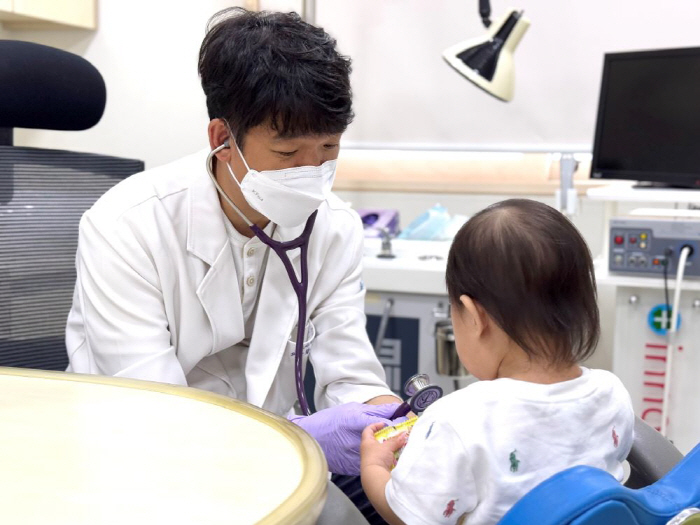Infant, Hand, Foot, and Foot, Foot, Foot, and Foot...Similar to cold symptoms such as high fever and dehydration, and treatment?
|
Recently, Lee, who raises a 3-year-old baby girl, was surprised to see blisters on the mouth, hands, and feet of the child who was suffering from high fever all night. As a result of visiting the hospital, he was diagnosed with hand-foot-and-mouth disease, and the child had difficulty eating well for several days. Lee said "I didn't know it would hurt so badly all of a sudden like this."I'm worried that there are not a few children suffering from this disease around me."
◇Similar to high-temperature dehydration and cold symptoms...It's contagious
Aquarium disease is a viral disease in which red rashes, blisters, and ulcers appear mainly in the hands, feet, and mouth, as the name suggests. It often shows symptoms similar to a cold, but in severe cases, the mouth is broken, making it difficult for children to eat well and dehydration symptoms along with high fever. Although very rare, complications such as meningitis or pulmonary hemorrhage can also occur in children under the age of five. Usually, they suffer for about a week, but the younger they are, the weaker their immunity can lead to a longer period.
Hand-foot-and-mouth disease is mainly transmitted through feces or respiratory secretions (slipping sputum runny nose) from an infected person. It takes three to seven days for symptoms to appear after exposure to the virus, and it is most contagious for a week after the outbreak.
Hand-foot-and-mouth disease is mainly treated to relieve symptoms because there is no fundamental treatment. Sufficient hydration is essential because pain is accompanied by mouth ulcers, which can reduce the amount of food eaten and cause dehydration. At this time, lukewarm water or drinks are better than hot ones. Spicy or sour foods can irritate the ulcers in the mouth, so it is better to avoid them. If a high fever of 38 degrees or higher persists, you should wipe your body with lukewarm water or use a fever reducer. Painkillers such as Tylenol or Burufen can be given to relieve pain in the mouth.
Most recover naturally after a week to 10 days, but if your child does not eat well and does not urinate for more than 8 hours, it is recommended to visit the pediatric and adolescent department immediately for treatment.
◇Protect personal hygiene such as hand washing...Part of the virus is detected even after a full recovery
To prevent hand-foot-and-mouth disease, it is most important to strictly observe personal hygiene. In particular, you should wash your hands frequently with soap for more than 30 seconds under running water. Disinfecting children's toys and their surroundings is also important, and fecal and diaper management should be thoroughly performed. Some viruses can be detected even after being cured, so continuous attention is required.
Hwang Young-jin, director of the Department of Pediatrics and Adolescents at Good Culture Hospital, said, `A foot-and-mouth disease is highly contagious and requires special attention for infants and toddlers living in groups such as daycare centers and kindergartens.' `It is important to avoid contact with other children to prevent transmission.' He then advised that even if the symptoms of fever and blisters improve, if the child shows abnormal symptoms such as lack of energy or inability to eat well, he/she should visit the hospital again without delay.
|
This article was translated by Naver AI translator.





